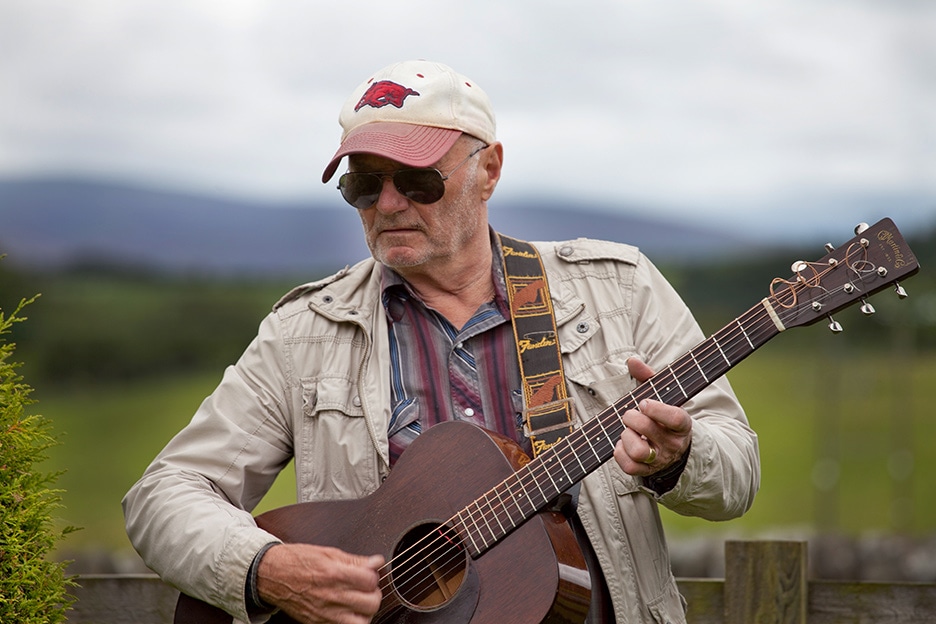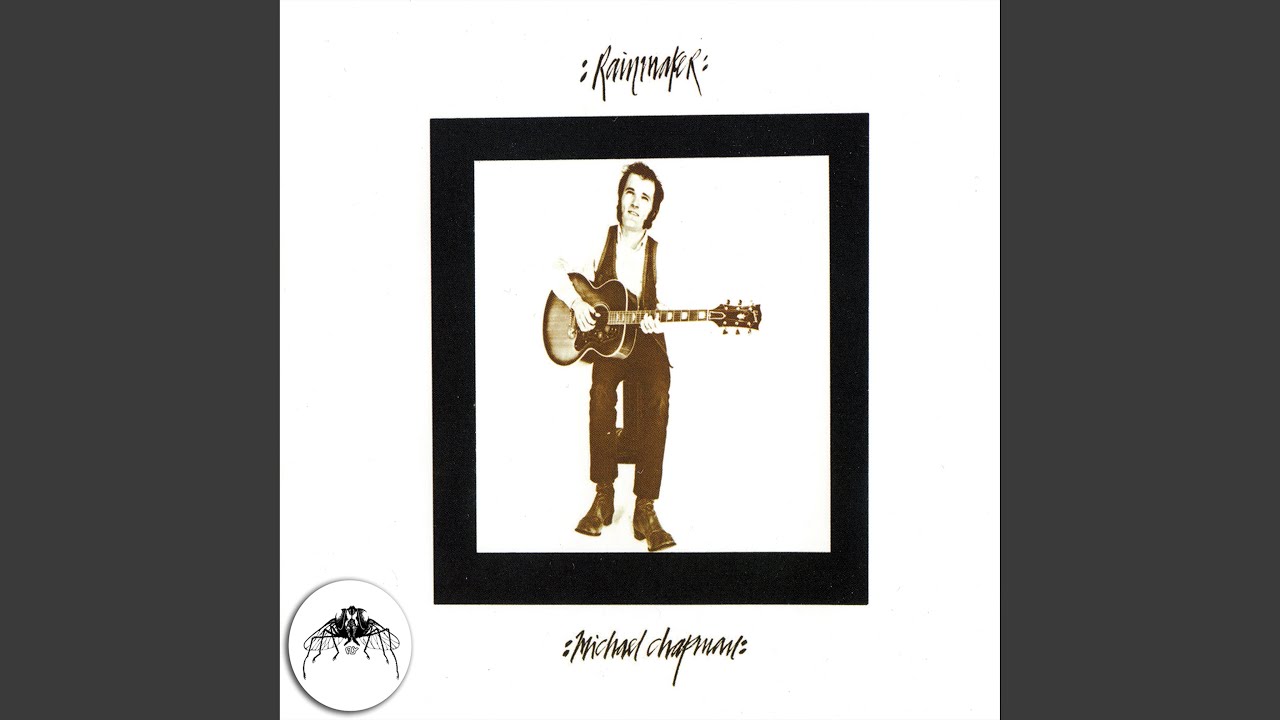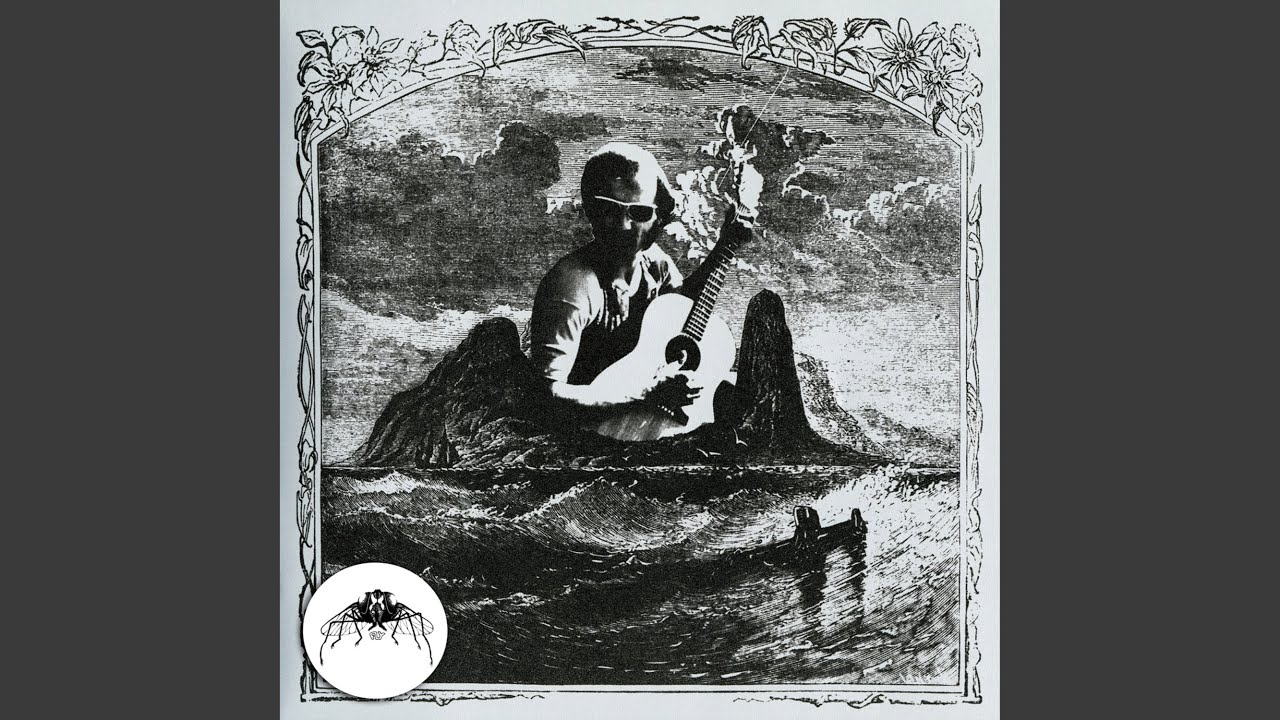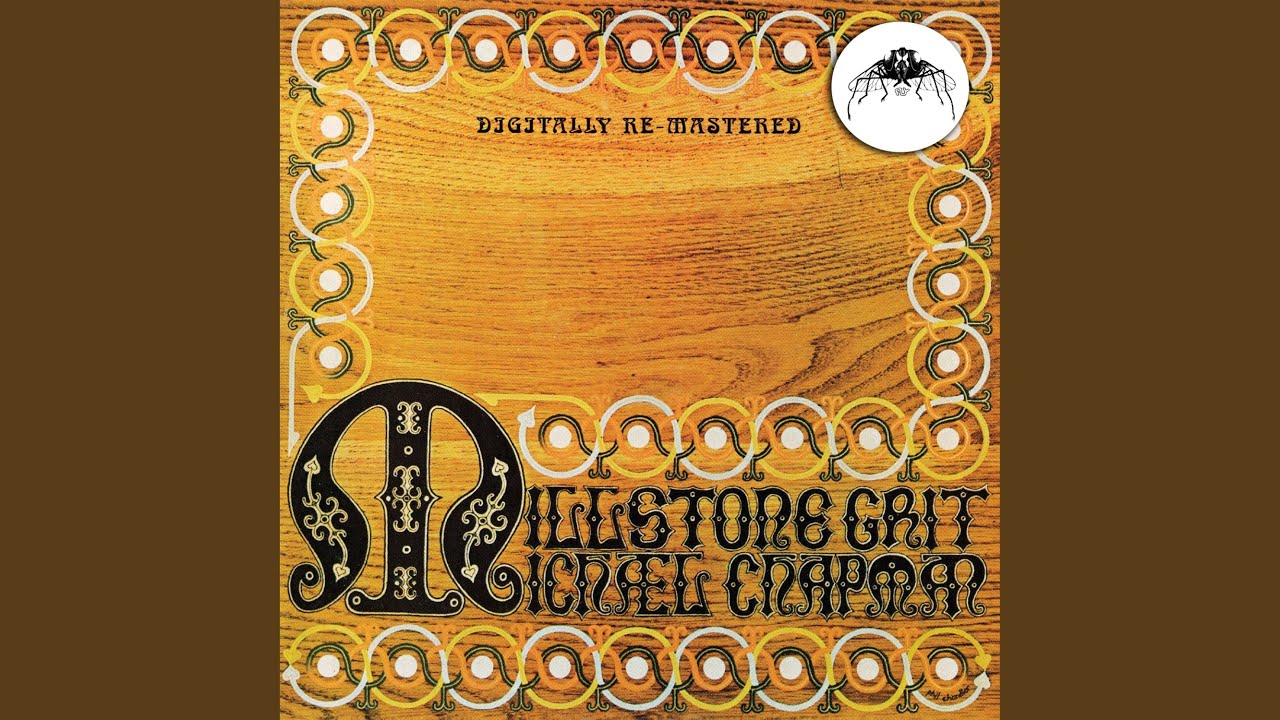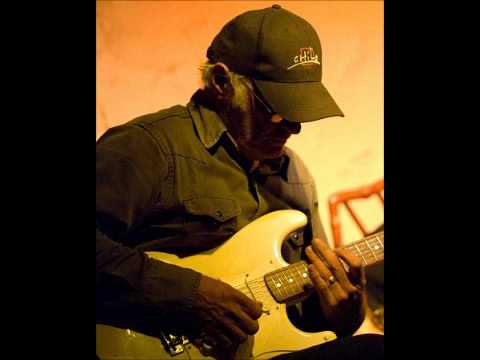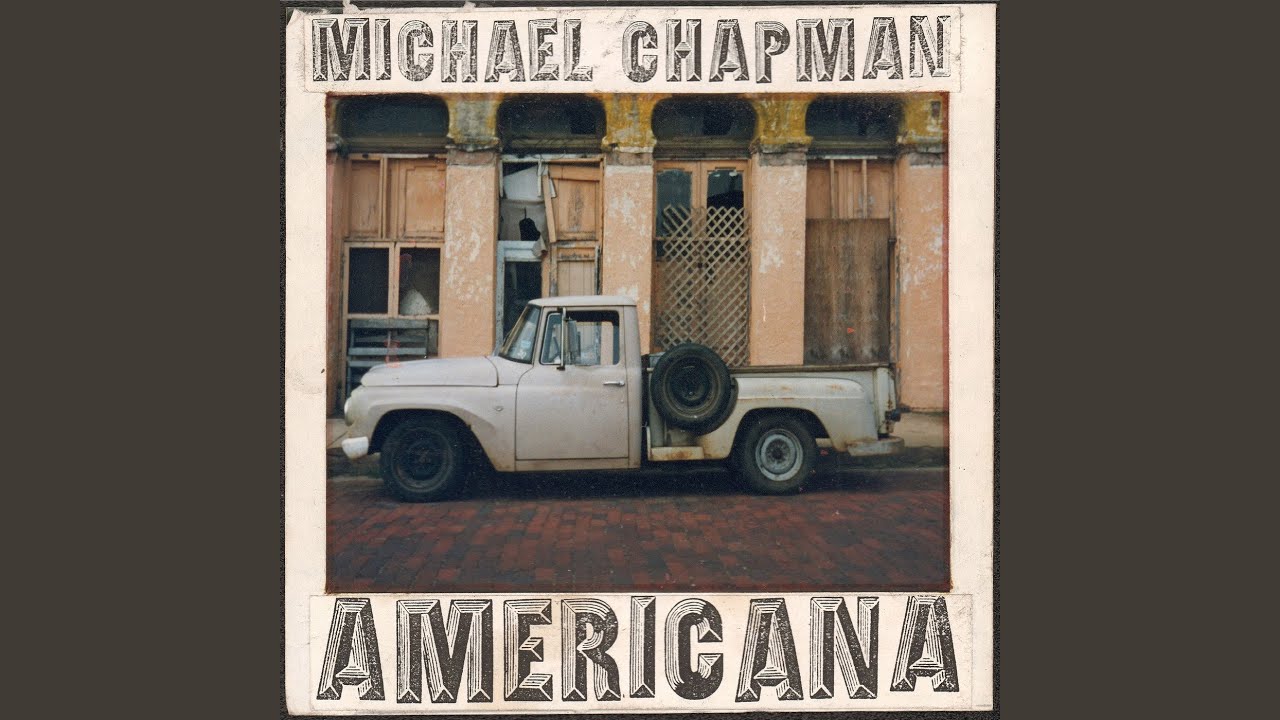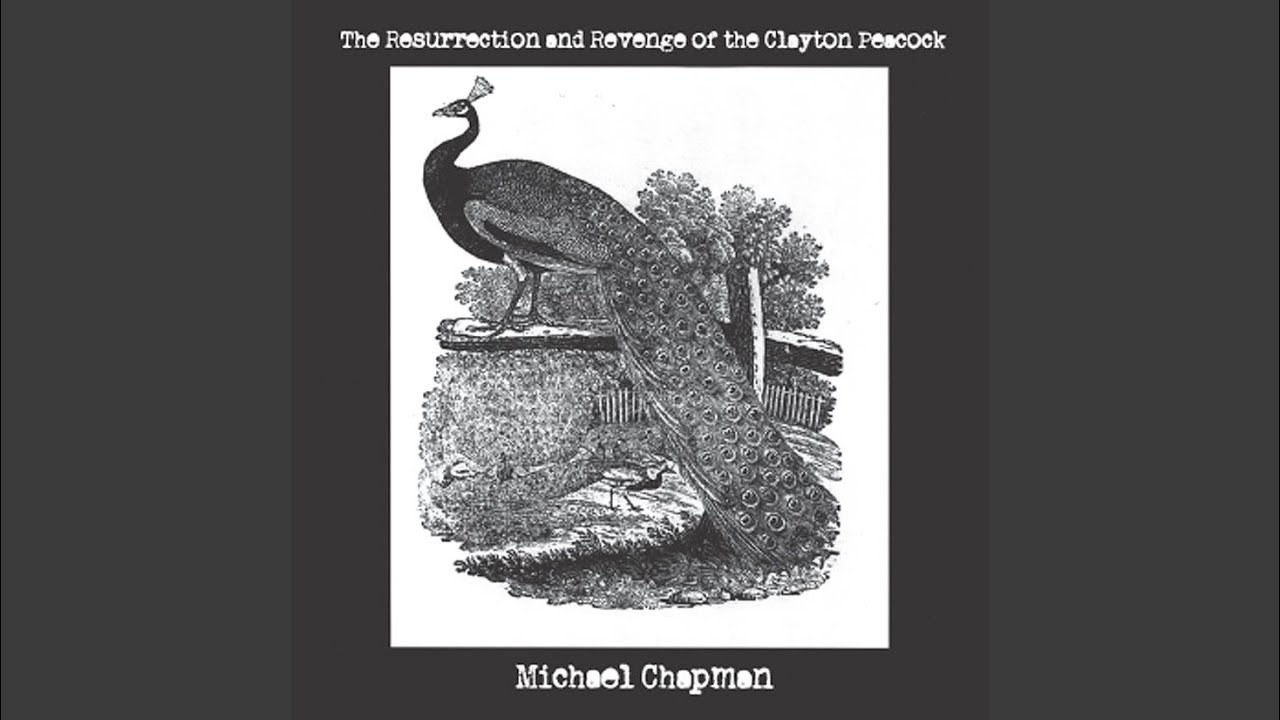Few discographies are as bewildering as that of singer-songwriter and guitarist Michael Chapman. In part, that’s simply because he made so many albums, 58 by the reckoning of his Guardian obituary in 2021, which seems as good a number as any to quote. Then there’s the sheer number of labels for which he recorded, which ranged from EMI’s faux underground label, Harvest, to tiny independents.
How to make sense of such a career? One place to start is in Cornwall in 1966, when Chapman fetched up at the Count House in Botallack. It was a Saturday night and it was raining. He couldn’t spare the money to get in, so he offered to play. His set, performed for an audience of folk fans, ranged from Thelonious Monk’s jazz standard ‘Round Midnight’ to ‘Green Onions’ by Stax house band Booker T. & the M.G.’s. He was given a residency on the back of the performance. “Got clean away with it,” Chapman remembered with evident satisfaction in 2019, when he spoke to me for a feature in Long Live Vinyl magazine.
The idea that Chapman was primarily a folk musician stems from this time, but it’s misleading. He liked the friendliness of the folk scene and you can see him as a psych-folk luminary, but he himself thought that “some of the music was disgusting.” According to his widow, Andru Chapman, it’s better to think of him as someone who was inspired by jazz. “That was the music he knew and loved,” she says.
However you frame it, Chapman’s career had begun in earnest. His first album, Rainmaker, helmed by Gus Dudgeon, Elton John’s producer through the 1970s, was released in 1969. Over the next few years, Chapman would be marketed as a singer-songwriter but never made a real commercial breakthrough. Not that he was interested in mainstream success. “If I’d played it safe I could have had a lot more recognition, probably money and whatever, than I have, but I don’t make the same record twice,” he told me (all subsequent Chapman quotes here are from 2019).
What did fascinate Chapman was his instrument. “He picked up the guitar every day,” says longtime fan and sometime collaborator Thurston Moore. “I think he was very interested in the mechanics and the stylistic techniques that he had picked up from people like Grant Green, the jazz guitarist… When I would watch him play, his dexterity was remarkable.”
Over the years that followed, including time in the 1980s and 1990s when Chapman was sometimes playing pubs and in danger of being forgotten, he developed a style that incorporated jazz, folk, rock and an exploration of what Moore calls “this kind of raga, meditational aspect of country blues guitar”. Leftfield American figures like Moore, Jack Rose (whose playing Chapman adored), William Tyler and Steve Gunn sought Chapman out.
His music was reappraised, a process much helped by Light In The Attic’s re-release of his early records with loving care and attention. Meantime, Chapman himself simply pushed on, touring and releasing Americana-inflected instrumental albums, song collections and improvised music. It says much about the quality of these recordings that, in the years since his passing, the esteem in which Chapman is held has only grown.
Thanks to Andru Chapman, Steve Gunn, Marc Higgins, Thurston Moore and Ryley Walker for their insights into Michael Chapman’s Strange World, which we present through 10 essential tracks
‘You Say’ from Rainmaker (1969)
When he came to record his debut album, Chapman was moving creatively at an extraordinary pace. “Nine months before he hadn’t written a song and then, between that time and going into the studio, he’d written his first album,” says Andru. ‘You Say’ is the Chapman track that’s most regularly streamed. According to Andru, “It was typical of how he was going to approach songwriting, because it’s kind of semi-autobiographical, which a lot of Michael’s songs were. It’s for me to know and you to wonder which are the autobiographical bits and which are fiction, but it chronicles our very turbulent first few years.” As for Chapman, he told me of the LP: “I know a lot of people like it, but I’m not over fond because I didn’t know what I could do… I was just jumping in the deep end, you know?”
‘Aviator’ from Fully Qualified Survivor (1970)
The nine-minute-plus opening track from the one record Chapman made that bothered the lower reaches of the album chart, ‘Aviator’ conjures up a sense of dread, of being hemmed in. It sounds like a political song, but the truth is more prosaic. “It was written because Michael got a tax demand for £28 that dropped through the letterbox that morning,” remembers Andru, “and it might as well have been £28,000 because we didn’t have £28. That’s where that song came from, the frustration and the sheer injustice of it all.” The LP featured a then relatively unknown guitar player from Hull, Mick Ronson of The Rats. Michael Chapman: “I had to fight like hell to get him on that record.” David Bowie for one was impressed by the results. There are strong echoes of Survivor on Hunky Dory, also featuring Ronson.
‘New York Ladies’ from Millstone Grit (1973)
In 1971, Chapman was booked to support saxophonist Cannonball Adderley. From Chapman’s perspective, he was “going on tour with God”. But these were nervy times in the USA. When Chapman and bassist Rick Kemp played Washington DC, much of the audience was “in battle dress with shades and guns on the table”. A delegation was sent to talk to Adderley: “You get them two white motherfuckers off your stage.” While Chapman later delighted in telling anecdotes of this time, it was tough. “He was having to sneak out of hotels because he couldn’t afford to pay the bill,” says Andru. ‘New York Ladies’, on his first LP for Decca offshoot Deram, Millstone Grit, was written about this tour. Thurston Moore has expressed admiration for the album, in which context it’s intriguing to hear the Sonic Youth-like guitar noise on ‘Ladies’. Moore: “He had a punk rock edge.”
’The Man Who Hated Mornings’ from The Man Who Hated Mornings (1977)
Through the 1970s, while he didn’t achieve commercial success, Chapman still crafted terrific songs, as ‘Mornings’ proves. “He was always the last to get up, which is surprising for an old-ass man,” recalls the musician Ryley Walker of touring with Chapman. “You’d think he’d get up at the crack of dawn and go feed the birds or something, but he was always sleeping until noon, one o’clock. I once asked him about this song, ‘Why did you write ‘The Man Who Hated Mornings?’’ He’s like, ‘Because I hate mornings…’” By contrast, Thurston Moore remembers Chapman insisting on getting started early when there was a journey to make: “I was like, ‘Well, can we stop for a full English and some coffee?’ He’s like, ‘Nope, here’s a piece of bread, shut up, get in the car.’” Whatever the truth, both agree Chapman loved playing live. Walker: “He just wanted to work.”
‘Heartbeat’ from Heartbeat (1987)
An album that slipped under the radar, Heartbeat was conceived as one long suite. Built on a heartbeat rhythm on the drums, it was designed to be heard in one sitting and marketed as a new age LP. Its length and form reflect a project that dates from an era when CDs were superseding vinyl. The term new age “meant nothing to Michael,” Andru says. “He just thought it was hippy bullshit, you know?” Nevertheless, she adds, Chapman “always liked” the LP. He also enjoyed recording the project because he got to work with his friend Rick Kemp, the Steeleye Span bassist who played on his Harvest LPs, and keyboard player Ritchie Close, who died aged just 39 in 1991 after contracting Legionnaires’ disease.
‘The Road To Senegal’ from Still Making Rain (1992)
The early 1990s were difficult for Chapman. Few were interested in his music, but he still wanted to work. In 1990, he had a heart attack. In the words of his close friend Marc Higgins, who still can’t bring himself to refer to Chapman in the past tense, “Michael has always liked to record, but also he’s never really had any money. So what he likes is to be able to record cheaply.” Meeting rookie producer Alex Warnes, who had set up “a rudimentary recording studio” locally, was therefore ideal. Still Making Rain, initially released on cassette, was the first result of their working relationship. The recordings are especially notable, says Higgins, for the way they showcase Chapman’s electric guitar playing. “Quite a lot of Michael’s contemporaries, if you give them an electric guitar, they don’t really know what to do with it.”
‘La Madrugada’ from Americana 2 (2002)
Chapman made two instrumental albums inspired by American road trips with Andru. Americana conjured the Deep South, while Americana 2 recalls, says Andru, “the high deserts of New Mexico, Arizona and California”. Both LPs, she adds, “came from” Blue Highways, William Least-Moon’s 1982 book about splitting up from his wife and then travelling around the USA by camper van on back roads. ‘La Madrugada’ became a highlight of Chapman’s live sets, often a closer. It was written in three churches, one in Italy, then one in Spain. “He finished writing it in a little whitewashed chapel on the Mexican border when we were down in southern Texas,” Andru remembers. Chapman loved churches and churchyards not out of any formal religious sense but because, “They say a lot about the community… the area and the people.”
‘The Resurrection Of Clayton Peacock’ from The Resurrection And Revenge Of The Clayton Peacock (2011)
Touring pubs with Chapman and playing acoustic guitar, says Thurston Moore, he found himself “accepted by this hard-drinking, hard-listening folk scene in England”. A meeting across generations and different musical cultures was occurring. Seeing how Chapman would improvise, says Moore, “I asked Michael to make a record where he just completely improvised on guitar to the point where it was in the realms of abstraction and free improvisation playing – not too far removed from, say, somebody like Derek Bailey.” Moore and Chapman would sometimes improvise together on stage in a “noise encore”. Moore remembers what he says was the first night the duo tried this. A “young lad” shouted “Yes!”, relieved he was going to get feedback and string-scraping rather than the “songwriting he had been subjected to for the whole night”.
‘This Reminds Me Of You’ from Fish (2015)
Eleuthera in the Bahamas became a haven for the Chapmans. Fish grew out of the couple’s holidays on the island. It was on Eleuthera, a place popular with musicians escaping the winter chill of Canada and the northern states of the USA, that Chapman broke through a period of, to quote Andru, “songwriting block”. But Chapman didn’t need words to express himself. According to Andru, ‘This Reminds Me Of You’ brings to mind an unspoken “intuitive conversation” the couple might have had. “It comes from when you’ve lived with somebody for so long you can communicate without speaking.” Spending time with the Chapmans at their rural home in England, says Thurston Moore, he remembers them playing records. Andru would be lost in music and “Michael would just sit there staring at her, fully in love with her.”
‘Truck Song’ from True North (2019)
“I find it quite bittersweet,” says Andru of True North, “because compared to even 50, which had been recorded a couple of years before, there was a frailty there.” Nevertheless, there’s a gravitas to the album that recalls Johnny Cash’s final recordings. “I had come to know Michael well,” says producer Steve Gunn. “He trusted me to help guide the record, which meant the world to me. The process was deeply personal – delicate, intimate, and entirely focused on capturing the essence of his songs in their purest form. I was so grateful to be there with him, and also with his old friends Bridget St John and B.J. Cole.” Chapman, who said he would have been a truck driver if he hadn’t been a musician, toured the LP but, says Andru, contracted “a horrendous chest infection”. It was “the beginning of the end”.
Who’s This Yorkshire Guy? (Live In Brighton, 2015) by Michael Chapman was released by Earth Recordings for Record Store Day

